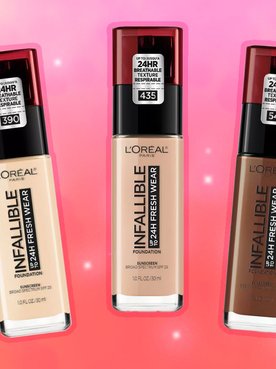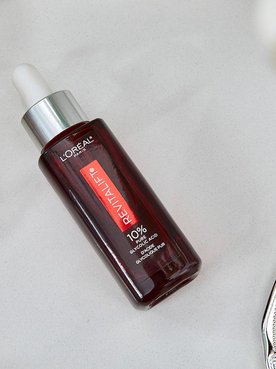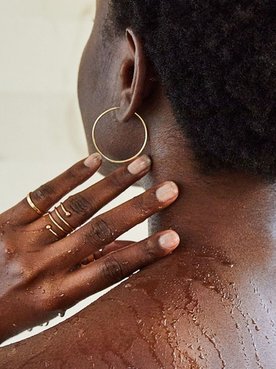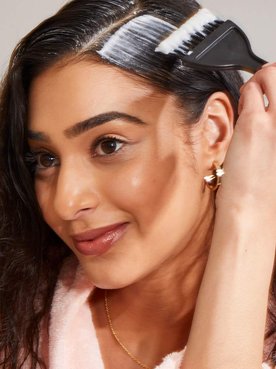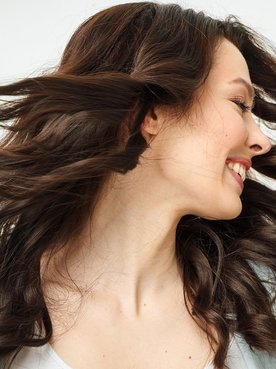Ultraviolet rays can take a toll on your skin, from causing sunspots to wrinkles and more serious concerns such as skin cancer. And while you likely know about the importance of sun protection — this isn’t anything new to you — did you know that taking your Fitzpatrick skin type into account can help determine how to help protect it? If you’re not sure what the Fitzpatrick skin type is and how you can determine yours (hint: you’ll need to use the Fitzpatrick scale), we’re detailing what you need to know, below.
What Is A Fitzpatrick Skin Type?
Before we jump into figuring out what your Fitzpatrick Skin Type is, let’s cover what exactly the Fitzpatrick scale is as a whole — via a brief history lesson. According to the National Center for Biotechnology Information (NCBI), the scale was first developed by American dermatologist Thomas B. Fitzpatrick in 1972 and today includes a total of six skin phototypes. The Fitzpatrick skin phototypes (types) were constructed based on an individual's skin color and tendency to burn or tan when exposed to sunlight. A lower Fitzpatrick skin type number corresponds to someone with lighter skin that more easily burns than it tans, and a higher Fitzpatrick skin type classification indicates the opposite.
While the classifications are understood to be subjective, the Fitzpatrick skin type scale has been proven valuable as a diagnostic evaluation tool for many situations, including predicting skin cancer risk and guiding sun protection advice, according to the NCBI. It also states that although the Fitzpatrick scale is widely used throughout different medical specialties, questions regarding the objective determination, accuracy of self-reporting, and effectiveness in darker skin tones are all major issues of concern with Fitzpatrick skin type classifications.
How To Find Your Fitzpatrick Skin Type?
Now that you know a bit more about how the Fitzpatrick skin types came to be, you can figure out how to determine yours. Courtesy of the Skin Cancer Foundation, the quick quiz below can help you just that. Do the math, adding up your total score from each question to find your Fitzpatrick skin type.
Question #1. What Color Are Your Eyes?
Put 0 if your eyes are light blue, light gray, or light green.
Put 1 if your eyes are blue, gray, or green.
Put 2 if your eyes are hazel or light brown.
Put 3 if your eyes are dark brown.
Put 4 if your eyes are blackish brown.
Question #2: What Is Your Natural Hair Color?
Put 0 if your natural hair color is red or light blonde.
Put 1 if your natural hair color is blonde.
Put 2 if your natural hair color is dark blonde or light brown.
Put 3 if your natural hair color is dark brown.
Put 4 if your natural hair color is black.
Question #3: What Is Your Natural Skin Color (before sun exposure)?
Put 0 if your natural skin color is ivory white.
Put 1 if your natural skin color is fair or pale.
Put 2 if your natural skin color is fair to beige, with golden undertones.
Put 3 if your natural skin color is olive or light brown.
Put 4 if your natural skin color is dark brown.
Question #4: How Many Freckles Do You Have On Unexposed Areas of Your Skin?
Put 0 if you have many.
Put 1 if you have several.
Put 2 if you have a few.
Put 3 if you have very few.
Put 4 if you have none.
Question #5: How Does Your Skin Respond to The Sun?
Put 0 if your skin always burns, blisters, and peels.
Put 1 if your skin often burns, blisters, and peels.
Put 2 if your skin burns moderately.
Put 3 if your skin burns rarely, if at all.
Put 4 if your skin never burns.
Question #6: Does Your Skin Tan?
Put 0 if your skin never tans—you always burn.
Put 1 if your skin seldom tans.
Put 2 if your skin sometimes tans.
Put 3 if your skin often tans.
Put 4 if your skin always tans.
Question #7: How Deeply Do You Tan?
Put 0 if you don’t tan at all—or very little.
Put 1 if you lightly tan.
Put 2 if you moderately tan.
Put 3 if you deeply tan.
Put 4 if your skin is naturally dark.
Question #8: How Sensitive Is Your Face to The Sun?
Put 0 if your face is very sensitive.
Put 1 if your face is sensitive.
Put 2 if your face is normal.
Put 3 if your face is resistant.
Put 4 if your face is very resistant and has never had a problem.
What Is Your Fitzpatrick Skin Type?
Now add everything up and read below to find your Fitzpatrick Skin Type.
Fitzpatrick Skin Type 1: Your Total Score Is Between 0-6
Those who are Type 1 always burn and never tan and are extremely susceptible to skin damage as well as cancers, according to the Skin Cancer Foundation. The best way to help protect your skin is to use a broad-spectrum sunscreen with an SPF of 30 or more, wear clothing with an ultraviolet protection factor (UPF) rating of 30 or more, and seek shade whenever possible. You should also do monthly skin checks.
Editor’s tip: If you’re having trouble picking up the habit of wearing sunscreen every day, try switching to a moisturizer with SPF like the L’Oréal Paris Revitalift Triple Power Day Lotion SPF 30 or the L’Oréal Paris Age Perfect Collagen Expert Day Moisturizer with SPF 30. Doing so can help ensure that your complexion is getting some sun protection, but wearing sunscreen is key to truly protect your skin.
Fitzpatrick Skin Type 2: Your Total Score Is Between 7-12
You almost always burn and rarely tan, making you highly susceptible to skin damage and cancer, according to the Skin Cancer Foundation. To care for your skin, wear a broad-spectrum sunscreen with an SPF of 30 or more, clothing with a UPF rating of 30 or more, and seek shade whenever you can. Additionally, check your skin from head-to-toe each month.
Fitzpatrick Skin Type 3: Your Total Score Is Between 13-18
Burning and tanning is a toss-up for you, making you susceptible to skin damage as well as both non-melanoma and melanoma skin cancers, per the Skin Cancer Foundation. Take care of your skin by applying a broad-spectrum sunscreen with SPF of 15 or greater daily, and 30 or greater for extended outdoor activity, according to the Skin Cancer Foundation. It’s also recommended to wear sun-protective clothing and seek shade when the sun is strongest. As with Type 1 and 2, you’ll want to check your skin head-to-toe monthly, per the Skin Cancer Foundation’s recommendation.
Fitzpatrick Skin Type 4: Your Total Score Is Between 19-24
You tan easily and are less likely to burn. Nonetheless, the Skin Cancer Foundation advises protecting yourself from the sun’s harmful UV rays. Apply a broad-spectrum sunscreen with SPF of 15 or more, and, when you’re outside for extended periods, SPF 30 or more, per the Skin Cancer Foundation. You should also seek shade when the sun is its strongest, as well as conduct monthly skin checks.
Fitzpatrick Skin Type 5: Your Total Score Is Between 25-30
You easily tan and rarely burn, though the Skin Cancer Foundation advises erring on the side of caution. As with types 2-4, you’ll want to wear a broad-spectrum sunscreen with SPF of 15 or greater daily, an SPF of 30 or greater when outdoors for extended periods of time and seek shade when necessary.
Fitzpatrick Skin Type 6: Your Total Score Is Between 31+
Your skin may not burn, but it’s still important to take sun safety measures! Per the Skin Cancer Foundation’s recommendation, wear a broad-spectrum sunscreen with SPF 15 or greater, SPF of 30 or greater for extended outdoor activity, seek shade between 10 a.m. and 4 p.m. when the sun is the strongest, and check your skin from head-to-toe each month.
That’s a lot of (very important) information, we know. Regardless of your Fitzpatrick skin type, everyone should wear SPF daily (year-round, not just in the summer) because everyone is susceptible to the sun’s damaging UV rays. While risk factors may vary depending on where you fall on the Fitzpatrick scale, it’s important that you take measures to help protect your skin from harmful ultraviolet radiation no matter what.
Next: Should You Wear Sunscreen in The Winter?
Edited By: Shalwah Evans, Photo Credit: Chaunte Vaughn

